
Meet the Frugalwoods: Achieving Financial Independence Through Simple Living
by
Elizabeth Willard Thames
Published 6 Mar 2018
I told Nate he should buy the stereo equipment he wanted, we got Thai takeout every Thursday night, and went out to dinner every Saturday. This lifestyle inflation we slowly layered on didn’t feel like anything noteworthy at the time. After all, we were still way more frugal than everyone else we knew. We didn’t have any debt, we lived in that dungeonlike basement, and we took our lunches to work every day. Nevertheless, our expenses were rising month after month. I’d heard the phrase “lifestyle creep,” but I didn’t think it applied to Nate and me. The problem was that spending all this money didn’t make me feel any better.
…
I mused: What’s the point of buying more house and more yard if we’re never there to enjoy it? If all our time is spent driving to and working jobs we probably don’t even like in order to pay for a house we never get to go to when the sun’s out . . . how is that an improvement? Bigger houses are one of the more insidious elements of lifestyle inflation. They lure us into thinking we’ll solve our problems and reach bliss if only we spend just a little bit more money for a little bit more square footage. And so we stretch our budgets in order to eke out an extra bedroom in a desirable school district. Then, we’re so heavily mortgaged that we’ve ensured we need to keep working that job we don’t like for a very, very long time.
…
Looking at every dollar we spent in a regular old month—not even a month when something noteworthy, like a friend’s wedding, happened—I felt like I do in the spring when I put on my bathing suit for the first time: exposed and larger than I had hoped. I was angry at myself. How had I let this lifestyle inflation happen? I’d considered myself a consummate frugalist. Yet here was irrefutable evidence of Nate and me flushing thousands of dollars down the drain on craft beer and throw pillows. I was tempted to tally up how much we could’ve saved if we’d been on a legit frugal path from the beginning, and if we’d known all along we were going to abandon the conventional life we’d originally forged.
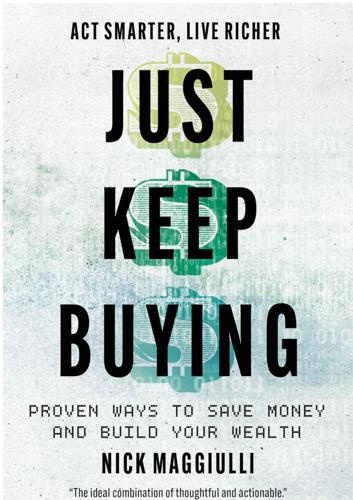
Just Keep Buying: Proven Ways to Save Money and Build Your Wealth
by
Nick Maggiulli
Published 15 May 2022
Maybe you want a new car, a better place to live, or you just want to dine out more often. No matter what you decide to do with your newfound cash, you’ve just fallen victim to lifestyle creep. While many personal finance experts will tell you to avoid lifestyle creep at all costs, I am not one of them. In fact, I believe that some lifestyle creep can be very satisfying. After all, what’s the point of working so hard if you can’t enjoy the fruits of your labor? But, where is that limit? How much lifestyle creep can you afford? Technically it varies based on your savings rate, but for most people the answer is around 50%. Once you spend more than 50% of your future raises, then you start delaying your retirement.
…
Within 20 years no Vanderbilt would be among the richest people in America. In fact, “when 120 of the Commodore’s descendants gathered at Vanderbilt University in 1973 for the first family reunion, there was not a millionaire among them.”²⁹ What caused the Vanderbilts’ financial ruin? Lifestyle creep and lots of it. Lifestyle creep is when someone increases their spending after experiencing an increase in income or as a way of keeping up with their peers. For the Vanderbilts this meant dining on horseback, smoking cigarettes wrapped in $100 bills, and living in the most opulent mansions in New York City—all just to keep up with other Manhattan socialites.
…
However, because Annie saved for the prior ten years as if she only needed $1.25 million for retirement, she has to work longer to make up for this lower level of savings in her past. With $600,305 invested and annual post-raise savings of $100,000 (at a 4% rate of return), Annie would reach her $2.5 million retirement goal over 12 years from now, instead of her original plan to retire eight years from now. Her lifestyle creep pushed back her retirement date. This is why too much lifestyle creep can be dangerous. It’s the impact on your lifetime spending that matters. If Annie wanted to retire on her original schedule, she would have to spend less than $100,000 a year. This implies that she has to save more than 50% of her raise. In fact, Annie would need to save 74% of her raise ($74,000) in order to retire on schedule in eight years.
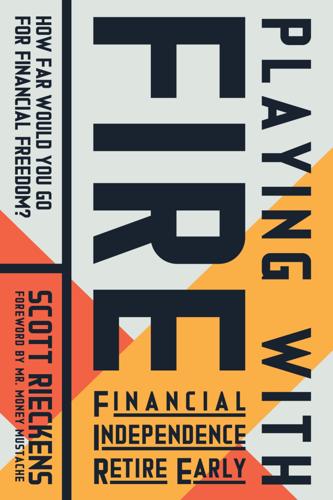
Playing With FIRE (Financial Independence Retire Early): How Far Would You Go for Financial Freedom?
by
Scott Rieckens
and
Mr. Money Mustache
Published 1 Jan 2019
Instead of maximizing our opportunities, or giving back to the world, Taylor and I were spending our lives working as much as possible so that we could slowly check off a long list of purchases that we thought would make us feel happy and important. What a waste! Like many people, as we earned more, we experienced “lifestyle creep”: the tendency to buy nicer things, eat out more, and play more expensively. Indeed, we often don’t notice all the ways our expenses rise to meet our income, and when lifestyle creep is left unchecked, it can be dangerous, even lethal, to financial health over the long term. My goal with Playing with FIRE is to offer an intimate view of an alternate path — a unique and interesting life design and philosophy that definitively bucks the trend.
…
I realized (too late) that his brand-new $19,000 fishing boat may not have been the best location for this conversation. I decided to back off. In the past, I had become too dogmatic about FIRE too quickly. The last thing I wanted was for Chucky to think I was judging him — and how could I, when Taylor and I had succumbed to lifestyle creep in the worst way? That night, I sent him more information on low-cost index funds and some links to good blogs and podcasts, and I left it at that. ■ ■ ■ ■ writing, producing the documentary, and playing cards around the kitchen table with family and friends. I enjoyed the kind of quality time with my family that I’d rarely experienced during our normal, short vacations to see them.
…
See also Barrett, Brad; Mendonsa, Jonathan Christmas gifts, 142–44, 150, 152–53 Chucky (author’s cousin), 139–41, 148, 183 club memberships, 15, 52, 61–62, 74 Coach Carson (blog), 109 coffee, 55–56, 163 college funds, 146 college savings accounts, 146 Collins, JL, 101, 109, 110–11, 114, 148 community, 121 commuting, 51 comparisons, 134 compound interest, 115–16, 145 compromise, 179 Confucius, 2 consumerism, 20, 84–85, 183–84 consumption, minimization of, 169 control, 120–21 Coronado (CA), 14; author’s departure from, 74, 82–85, 86–88, 137, 144; author’s extravagant lifestyle in, 12–18; author’s house hunt in, 160; author’s net worth in, 179–80; author’s relocation to, 14; author’s residence in, 75, 131; cost of living in, 75, 77, 79, 126, 131, 162; Taylor’s Take on leaving, 87–88 Costco, 55, 56 Craigslist, 74, 158 credit card debt, 133 credit card rewards, 51 Dallas (TX), 124–25 dating, 133, 173 debt, 7–8, 9, 45–46, 189 depreciation, 158 Deschutes National Forest, 157 dining out, 9, 12–13, 50, 52, 57–58, 144, 150, 168 Early Retirement Extreme (blog), 25, 26 eBay, 74 eco-friendliness, 68 economic recession (2008), 7, 69, 70 Ecuador FIRE retreat: author’s experience, 109–11, 116, 117–22; in author’s travel plan, 83; FIRE community at, 109, 117–19, 124, 171; frugality and attendance at, 119–20 Effective Altruism, 26 employment, choice of, 70 Encinitas (CA), 75 entertainment, 9, 50–51, 52, 53–54 entrepreneurs, 118–19 Eric (author’s childhood friend), 137, 138 expense cutting: author’s experience, 5–6, 183–84; author’s ten-step plan for, 50–51; cars, 60–61, 126, 129–30, 169, 188–89; club memberships, 61–62; daily expenses, 188; food expenses, 55–58, 150, 188–89; geo-arbitrage for, 93, 94; holiday gifts and, 142–44, 150, 152–53; housing, 126, 188–89; “sunk cost fallacy” and, 62–63 expenses: “Big Three,” 50; financial independence and, 149; “fun,” 50; keeping less than earnings, 126–29; “lifestyle creep” and, 9; medical, 45–46; retirement calculator using, 39–41; tracking, 51–55, 102, 188 extra-income opportunities, 51 families: large, and financial independence, 45–47; living with, 81, 92, 93 Ferriss, Tim, 18–21, 94, 142 1500 Days to Freedom (blog), 125 financial advisers, 114–15 financial independence, 146; FIRE Stories, 45–47; as self-defined, 149 “Financially Independent Retired Early: Flaws with the Philosophy?”
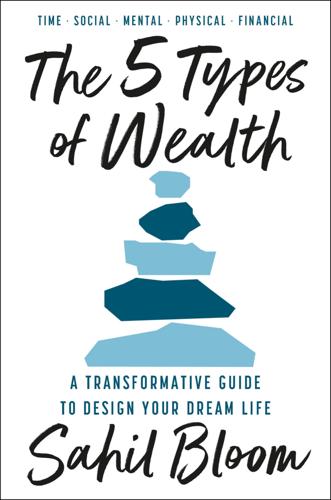
The 5 Types of Wealth: A Transformative Guide to Design Your Dream Life
by
Sahil Bloom
Published 4 Feb 2025
Manage expectations: The greatest risk on your journey to financial independence is expectation inflation, often referred to as lifestyle creep. Never allow your expectations to grow faster than your income. Those who are willing to live below their means in their early years are highly likely to reap the rewards in the future. It’s easier to be frugal in those early years, as there is a natural growth in expenses from family or related considerations in the later years. Your goal is for the gap between income and expenses to grow over time, meaning your expenses should never grow at the same rate as your income. Avoiding lifestyle creep and excessive debt burdens creates a gap that grows at an accelerating rate, which enables incremental investment to accelerate over time.
…
My Enough Life has a vacation home in a beautiful location, mainly because I want to be able to host family and friends to make incredible memories, but it is devoid of luxuries I have no interest in (private jets, yachts, mansions, supercars, fancy jewelry, and so on). The point is that it is your Enough Life—not someone else’s, not influenced by social or cultural pressures, not prone to the subconscious escalation of lifestyle creep. By defining it, by writing it down and keeping it top of mind, you force it into the conscious mind. This doesn’t perfectly halt the natural upward movement, but it does convert an irrational, subconscious movement into a rational, conscious one. Your aim then becomes building Financial Wealth—through income generation, expense management, and long-term investment—up to the point where it enables that Enough Life that you have defined.
…
If you plan, you can avoid incurring significant new debt (credit card or otherwise) when large expenses hit. Manage expectations as a liability: Expectations that grow faster than assets are the most common cause of financial misery. Track your lifestyle expectations and ensure that you are not allowing those expectations to inflate materially as your income grows. Avoid the perils of lifestyle creep, particularly in the early years of your journey to financial freedom, as incremental dollars invested early are worth more later. Your expenses will change throughout your life. As you accumulate responsibilities (including partners and children), your expenses will naturally grow. It’s perfectly reasonable to assume that your expenses will grow over time (particularly given economic inflation).
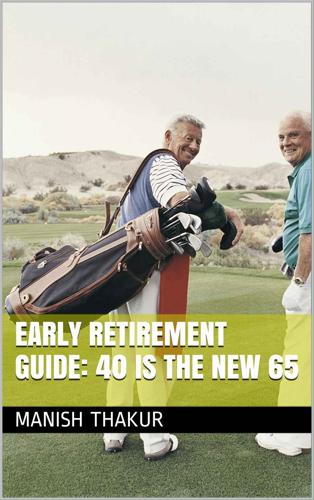
Early Retirement Guide: 40 is the new 65
by
Manish Thakur
Published 20 Dec 2015
Fast forward a few better paying jobs and raises, and you're leasing a new car, have a mortgage on a large house, and are planning on buying a speedboat. Lifestyle inflation creeps up slowly, gradually building up as we get used to a new standard of living. A short time after we get what we want, our happiness returns to a normal level, and we start looking at what else we'd like to have to increase it. After that, the lifestyle we've become used to is hard to get away from; it has become a habit, a new standard for our lives. That's the big problem with lifestyle inflation: it's built into the way our brains work. Humanity has always had to struggle to survive, because for most of our history, we barely had enough to survive, and it wasn't always guaranteed that there would be enough food or a safe place to sleep.
…
This book or any portion thereof may not be reproduced in any form without the express written permission of the author. TABLE OF CONTENTS Introduction The Fundamentals of Early Retirement Mindset of Financial Independence Lifestyle Inflation Pursuing the Ideal Life The Power of Conscientious Spending The Magical, All Powerful Saving Rate Get Time on Your Side Practical Steps to Early Retirement Become a Budget Superstar Put the Credit Cards through a Wood Chipper Build an Emergency Fund Plant the Seed of a Money Forest Set up Automatic Deposit and Investing Keep the Investing Inertia Going Money Saving Strategies Become the Home Cooking Master Get a Smaller Home Move Closer to Work Ditch the Car Increase Your Income FAQ on Early Retirement Conclusion Introduction Retiring at 65 sucks.
…
Challenges: Rate your mood once a day for a week at the same time each day. Compare how you rated days that you worked versus your days off. Is there a significant difference? Think about when you be 50, and reflecting on when you had your current job. What will be the type of memories that you'll recall. Lifestyle Inflation Any time there is an increase in income, it's tempting to go out and buy more things, because why not? You have the money for it now and don't need to wait to save up for it. A shiny new car is really going to make you feel better and start your day off right during the morning commute.
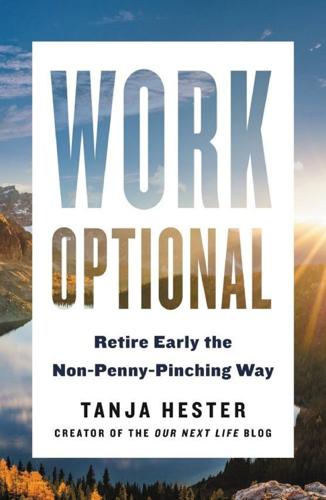
Work Optional: Retire Early the Non-Penny-Pinching Way
by
Tanja Hester
Published 12 Feb 2019
Most likely, she gradually worked her way up the price ladder, with each step not feeling like a significant enough difference to warrant concern. It’s this invisible slippery slope that makes lifestyle inflation the single biggest threat to early retirement, a fact backed up by research. Only a third of people in the US follow a detailed budget, while two-thirds don’t budget or track their spending closely, nor do they follow a big-picture financial plan.1 Lifestyle inflation is a phenomenon that affects people at all income levels and is the result of a psychological phenomenon called hedonic adaptation, which is the tendency we all have to adapt quickly to changes in our lives and return to a baseline level of happiness, regardless of how many good or bad things may happen.
…
Consider which of those new expenses cover true needs, like school expenses for kids, and which cover wants, expenditures that aren’t necessary but are purely optional. Most lifestyle inflation tends to happen with wants masquerading as needs. For example, many people require a car to get to work. If we consider all cars equal, then it’s easy to justify trading in for a brand-new car every few years because a car is clearly a need. However, all cars are not equal, and a new car is not a need. A cheap, used, 20-year-old car will get you to work just as effectively as the nicer car, so the used car is the need, a newer car is a want masquerading as a need, and a string of newer cars over the years is textbook lifestyle inflation keeping you from saving as much as you could.
…
You’re allowed to have things in your life that you want, but if your goal is to retire early, one of the best things you can do for yourself is to learn to recognize when your lifestyle is inflating, to sniff out the wants pretending to be needs, and to be deliberate about the lifestyle inflation you choose to spend money on. The second biggest barrier to saving, related to lifestyle inflation, is mindless spending, those seemingly small expenditures we make every day without thinking, most often on things that don’t add real value to our lives. Mindful spending is spending you plan for and consider thoroughly before handing over your hard-earned cash, spending where you make sure you really need that thing or at least that you’ll use it often enough to justify the cost.
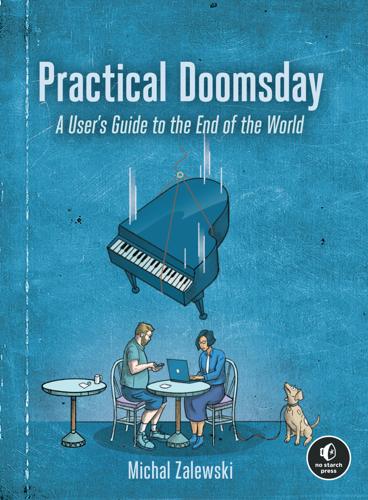
Practical Doomsday: A User's Guide to the End of the World
by
Michal Zalewski
Published 11 Jan 2022
Countless Silicon Valley tech workers collect cozy salaries of $150,000 or more but still live paycheck to paycheck. When the job market dried up overnight in 2007, the number of evictions and foreclosures looked pretty gloomy down here too. Higher cost of living played a role, but so did the phenomenon of lifestyle creep: the tendency to scale up small, everyday purchasing decisions in proportion to one’s income. For Silicon Valley techies, it usually wasn’t the Lamborghini or the McMansion that did them in. It was the hundreds of small purchases where they reached for the upper shelf in the grocery store, indulged in geeky hobbies, and upgraded their phones and laptops every year.
…
I understood that making a purchase with saved money would undo x many days of work. In addition to setting aside a fraction of regular pay, I found it worthwhile to set ground rules for any eventual bonuses or raises at work. Without a plan, such fortuitous events can serve as inflection points for lifestyle creep, when we’re tempted to buy a new phone or start picking up fancier olive oil at the grocery store. One strategy is to set aside the entirety of the new income and then continue as if nothing has changed. A less severe variant is to divert half the money to your emergency fund, and then spend the other half.
…
King, 35 humanitarian abuses, 8 Humphrey, Caroline, 59 hunting, 168–169 HydraBarrier, 148 hydration, 131–135 hydrocortisone, 150 hydrogen peroxide, 148 hygiene, 149 hyperinflation, 23–24, 71 I ibuprofen, 150 Icom, 188 identification, 166–167 illness, 14–15, 150 imminent harm, 204 impulse sealers, 141 income, 91–93 index funds, 80–81 industrial accidents, 19–20, 177 inflation, 70–71 InfoTracer, 110 injuries, 150 injury, 12–13 innocence, 204 inReach SE+ device, 183 insects, 176 insurance, 11, 51–52, 87–88, 201 Intelius, 110 The Intelligent Investor (Graham), 80 intentional harm, 13–14 internet safety, 105–111 internet service, 51 intrinsic value, 84 iodine pills, 180 iPostal1, 111 Iran, revolution, 22 J jacketed hollow point (JHP) ammunition, 217 joint tenant bank accounts, 14, 125 Just One Bite, 177 K Kaczynski, Ted, 27 Kahr Arms CW380, 214 Katadyn filters, 134 kcal needs, 138–139 Kearny, Cresson, 39 Kennedy, John F., assassination of, 26 Kenwood, 188 Kershaw Leek, 170 King, Rodney, 21 King, Stephen, 32–33 knives, 169–170, 208 L ladder injuries, 98–99 laundry, 148–149 lawsuits, 69–70 leaks, 147–148 legal separation of assets, 88 Lewis, Alfred Henry, 20 LexisNexis, 110 lidocaine cream, 150 LifeStraw, 134 lifestyle creep, 11, 53 lights, 154–155 limited liability companies (LLCs), 88 literature, 29–30 lithium-ion batteries, 155, 163, 169 Litin, Scott C., 152 Little Ice Age, 33 living trusts, 14 loans, 53–54, 78–79, 89 lockpicks, 112 long emergencies, 71 long guns, 214–217. See also firearms loperamide, 150 Los Angeles riots, 21 Lucian of Samosata, 29 M “The Machine Stops” (Forster), 29–30 Maduro, Nicolás, 137 mail-forwarding companies, 111 malaria, 176 Mao Zedong, 21, 138 margin loans, 89 martial arts techniques, 206 masks, 174, 177 Mayo Clinic Family Health Book (Litin), 152 meals ready to eat (MREs), 144 meclizine, 150 medications and medical supplies, 99–100, 149–152 melatonin, 179 memberships, 51 MERS, 26 Michel, C.

Cashing Out: Win the Wealth Game by Walking Away
by
Julien Saunders
and
Kiersten Saunders
Published 13 Jun 2022
In fact, the legacy of the United States is built on the value of our ancestors’ labor. But our community’s attachment to that narrative has caused us to overvalue our work ethic. We’ve been so conditioned to work hard that we don’t recognize there are several other ways to earn income that don’t require never-ending, backbreaking work. Also, high earners are prone to “lifestyle inflation.” With every milestone or boost in income comes a corresponding upgrade. Graduated from college? Buy yourself a nicer car to acknowledge your achievement. Got married? Buy a bigger house . . . something you can “grow into.” Interviewing for a new job? Update your wardrobe because you must look the part to get the part.
…
So naturally, as soon as they have the option to splurge a little bit, they take full advantage of it. Who can blame them? Everyone deserves a reward for their hard work, especially if they’ve waited a long time for it. The problem is, once the genie’s out of the bottle, it’s really hard to put it back in. They become victims of what is known as “lifestyle inflation,” the tendency to counteract an increase in income with corresponding increases in spending. This is why car dealerships are so flexible in allowing you to test-drive a car or take it home for the weekend. This is why real estate agents show you homes that match your search criteria and one that’s just a notch above your budget.
…
See investment/brokerage accounts Broughton, Philip Delves, 138 Browning, Chris, 218 budgeting, importance of, 16 Buffett, Warren, 163 Bureau of Labor Statistics, 59 burnout, 31–33 Business Insider, 32, 76 Butler, Jason, 135 buying power, Black, 52–55 C cable television, 64 CampFI, 37–38, 212, 219 car dealerships, 61 career, fifteen-year, 74–102 caveats regarding, 75–76 rules and richuals for, 82, 89–90, 95, 101–2 and skeptics, 99–100 years 1–5: paying off debt, 76–82 years 6–10: building an income portfolio, 83–90 years 11–15: building an escape hatch, 90–95 “The Case Against Tokenism’ ” (King), 41 cash bonuses from banks, 130–31 Center for American Progress, 165 certainty in financial markets, lack of, 111, 114–16 children and childcare costs, 30 and fifteen-year careers, 75, 76 and 529 plans, 168, 205 funding investment accounts for, 94 choices, right to make own, 100 churches, Black, 36 civil institutions, faith in, 36–37 Clahar, Erica “Umi,” 221–22 community, time to dedicate to, 25 comparison, avoiding trap of, 224 compound interest and author’s early investments, 155 and investment fees, 172 power of, 67–68, 140, 172 confidence and the “Dwayne Johnson Effect,” 112–13 and FI community, 209 and identifying strengths, 89–90 and investing expertise, 116 conflict in relationships avoidance/fear of, 170, 195 from competing objectives, 42 as a constant, 198, 199 in couples, 11, 189–90, 190 and 51 percent rule, 198 and fighting about money, 198, 199 normalizing, 189 as opportunity for growth, 15 connectedness, false sense of, 25 consumerism and spending as addiction/compulsion, 44–45, 210 and authors’ first conversation about money, 179–88 and Black buying power, 52–55 breaking the cycle of, 45 and budgeting, 16 conversations about, 190–93 in excess of income, 210 and Fast Spenders personality type, 48–50, 51, 52, 61, 69 and identities tied to belongings, 59 and labeling people as “spenders,” 191 and “lifestyle inflation,” 39, 61 and living below your means, 72 of Middle personality type, 50–51 and purpose of income, 51–52 and stealth wealth, 38, 39 See also expenses; frugality content creators, 141–45 conversations about money about debt, 195–96 about future plans, 193–94 about saving, 193–94 about spending, 190–93 authors’ first, 11, 179–88 and constraints of labels, 191–92 exercising curiosity in, 192 and normalizing conflict, 189 pause button in, 202–3 scheduling short but frequent, 202 using “I” statements in, 194 using “tell me more” prompt in, 196–97 couples, 179–203 authors’ first conversation about money, 11, 179–88 and backgrounds of individuals, 180–81, 184–85, 187, 188 challenges faced by, 201 conversations about debt, 195–96 conversations about future plans, 193–94 conversations about saving, 193–94 conversations about spending, 190–93 and divorces, 75, 199, 201, 234 emotional attunement in, 189–90, 193, 195, 196, 202 and expectations for happiness, 200–201, 202 and 51 percent rule, 200–201, 202, 231 and fighting about money, 189, 198, 199 interaction patterns in, 189 and money-related conflicts, 189 rules and richuals for, 202–3 shared goals of, 192–93 courage to accelerate your income, 139 and the “Dwayne Johnson Effect,” 112–14 and making financial progress, 108, 111 and paying yourself first, 118 small acts of, 117–18 courses, digital, 135–37 COVID-19 pandemic changes brought by, 228–29 and FI community, 231–33 lessons learned from, 15, 229–31 and Umi Feeds (nonprofit), 222 unknown financial impact on Black America, 54 Craigslist, 134 credit cards and authors’ first conversation about money, 182–83, 186 cash bonuses from, 131 debt from, 4 high balances on, 45 and Jannese’s success story, 123, 124 paying off, 6, 82 credit scoring, 3 cryptocurrency, 114, 129, 174 curiosity, 116, 192, 196–97 D debt and authors’ first conversation about money, 179–88, 195, 197 authors’ freedom from, 6, 11 avalanche method of paying off, 79, 80 conversations about, 195–96 of couples, 195–96 and living paycheck to paycheck, 77–78 paying off, 6, 76–82, 99, 195–96 and rewarding yourself, 81–82 snowball method to paying off, 80–81, 81 student loans, 4, 6, 59, 76–77, 123, 124, 210 treated like moral failing, 195 See also credit cards Delish D’Lites, 123–24 Deutsche Bank, 128 digital divide, 128.

Early Retirement Extreme
by
Jacob Lund Fisker
Published 30 Sep 2010
This spiral makes little sense, so either work isn't so bad, or perhaps there is another reason for this behavior. One reason may be that many people are salaried full-time employees. They can't choose to work any less, so they might as well spend the superfluous money they earn. As a result, no matter how much someone earns, expenses tend to match income. This is called lifestyle inflation. Without the wisdom to determine when enough is enough, consumption is taken to its extreme and people still work as much as ever, if not more, despite doubling their productivity over the past half century. On the homefront the growing use of time-saving technology doesn't result in time saved either.
…
Unlike a business, which invests the money in assets with a higher return, allowing businesses to use debt as a leverage, consumers "invest" in higher consumption. The lack of return on assets to pay the interest means they must either work harder or longer for their consumption, and so they do. Add lifestyle inflation (see The pursuit of stuff, status, and happiness) and you have a process that inherently demands more and more work while quite possibly providing less and less contentment. This is the definition of a wage slave. Wage slaves are free to change their job, but they're not free to quit their job.
…
The costs manifest mainly as real estate costs--that is, paying to put your stuff somewhere--and if you put it in your main residence and subscribe to central heating, the cost of keeping it at a comfortable temperature. Stuff is also hard to transport, so having a large amount of stuff makes it difficult to move and therefore it acts as an anchor on your mobility. Maintenance includes everything from simple repair--if you can't do it yourself--to fuel costs and insurance. Lifestyle inflation is a well-known and well-exploited phenomenon. Just think about accessories and the next upgrade. Things can be taken away from you. They can be lost in a fire, stolen, or simply confiscated. I don't own anything tangible that would be heartbreaking to lose or which has substantial replacement costs.
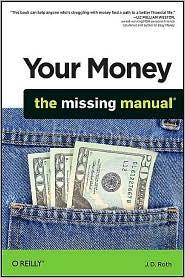
Your Money: The Missing Manual
by
J.D. Roth
Published 18 Mar 2010
In other words, if you want more as you earn more, you'll never be content; there will always be something else you crave, so you'll need to work even harder to get the money to buy it. You'll be stuck on the hedonic treadmill, running like a hamster on a wheel. The hedonic treadmill leads to lifestyle inflation, which is just as dangerous to your money as economic inflation; both destroy the value of your dollars. Fortunately, you can control lifestyle inflation. You can opt out, step off the treadmill, and escape from the rat race. To do that, you have to set priorities and decide how much is Enough. The next section shows you how. How Much Is Enough? Kurt Vonnegut used to recount a conversation he had with fellow author Joseph Heller (Vonnegut published this anecdote as a poem in the New Yorker).
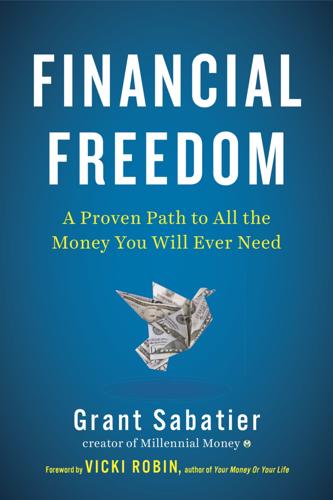
Financial Freedom: A Proven Path to All the Money You Will Ever Need
by
Grant Sabatier
Published 5 Feb 2019
We get caught up in what others are spending their money on and tend to adopt a lifestyle similar to that of those around us, even if we don’t really want what they have. Or we spend money because today it makes us feel powerful, when in reality the money will be worth more and give us more power tomorrow than today. We also tend to spend more money as we make more money, a trend known as lifestyle inflation—which explains why a pop star or an athlete can earn millions of dollars per year and still end up deep in debt. This also explains why so many people who make $100,000 or more are still living paycheck to paycheck or are deep in debt; they’re spending more than they need to and living a lifestyle they can’t afford.
…
American Household Me and Wife Food $7,203 $6,000 Housing $18,886 $24,000 Apparel and services $1,803 $1,000 Transportation $9,049 $2,000 Healthcare $4,612 $7,000 Entertainment $2,913 $3,000 Personal insurance and pensions $6,831 $2,000 All other expenditures $3,933 $4,000 Cash contributions $2,081 $1,000 Total $57,311 $50,000 This is my sweet spot—when I spend more, it doesn’t make me any happier or make my life much richer. But let me also be clear that while $50,000 is my target, I’m not perfect, and after spending less than $50,000 every year from 2010 through 2015 and reaching financial independence, in 2016 I fell victim to the dreaded lifestyle inflation and spent over $200,000, which included many frivolous purchases that I regretted soon after I made them. Spending $200,000 actually made me less happy than spending $50,000. I made a lot of money mistakes in 2016 and it threw off a lot of my calculations. I needed to recalibrate and recommit to my path, which I did.
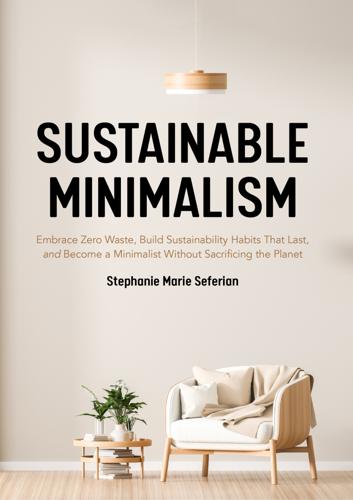
Sustainable Minimalism: Embrace Zero Waste, Build Sustainability Habits That Last, and Become a Minimalist Without Sacrificing the Planet (Green Housecleaning, Zero Waste Living)
by
Stephanie Marie Seferian
Published 19 Jan 2021
I was mesmerized by the coral reefs and marine life, and the experience opened my eyes to two conflicting realizations: while I wanted to continue to travel and see the world’s beauty, I had just witnessed the effects of coral bleaching firsthand. I was at a crossroads—how could I travel without further contributing to the destruction of the environment? First, I examined my budget. I was ashamed to realize that I had let lifestyle inflation creep into my life. There were my afternoon caffeine fixes, small indulgences to which I often treated myself, and plenty of shopping sprees I went on for secondhand books. I found myself making excuses for my poor decisions. I needed caffeine to get me through the workday, right? Without it, how would I be a good employee and progress in my career?
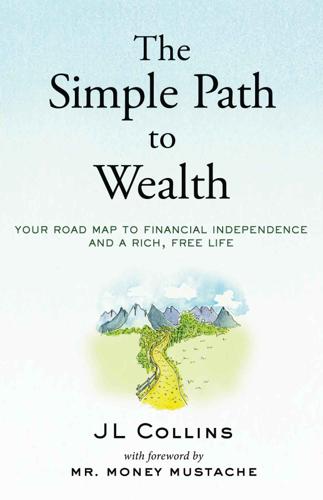
The Simple Path to Wealth: Your Road Map to Financial Independence and a Rich, Free Life
by
J L Collins
Published 17 Jun 2016
A 50% savings rate is my suggestion, but others more committed to having F-You Money commonly reach for 70-80%. He is already stepping out of the norm by being debt free, saving and investing. He is employed, young and childless. Never will he be in a stronger position to take it to the next level. At the very least, he should avoid “lifestyle inflation” by pledging that any salary increases will go towards his investments. If he does this now, in the future his problem will be how to spend all the money his money earns for him. OK, with all that under our belt let’s run some numbers and look at a couple of options, with their specifics.
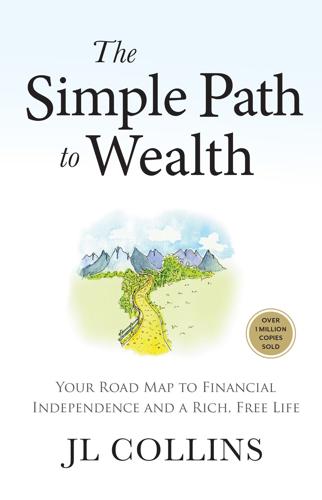
The Simple Path to Wealth (Revised & Expanded 2025 Edition): Your Road Map to Financial Independence and a Rich, Free Life
by
JL Collins
A 50% savings rate is my suggestion, but others more committed to having F-You Money commonly reach for 70%–80%. He is already stepping out of the norm by being debt-free, saving, and investing. He is employed, young, and childless. Never will he be in a stronger position to take it to the next level. At the very least, he should avoid “lifestyle inflation” by pledging that any salary increases will go toward his investments. If he does this now, in the future, his problem will be how to spend all the money his money earns for him. OK, with all that under our belt, let’s run some numbers and look at a couple of options, with their specifics.